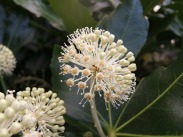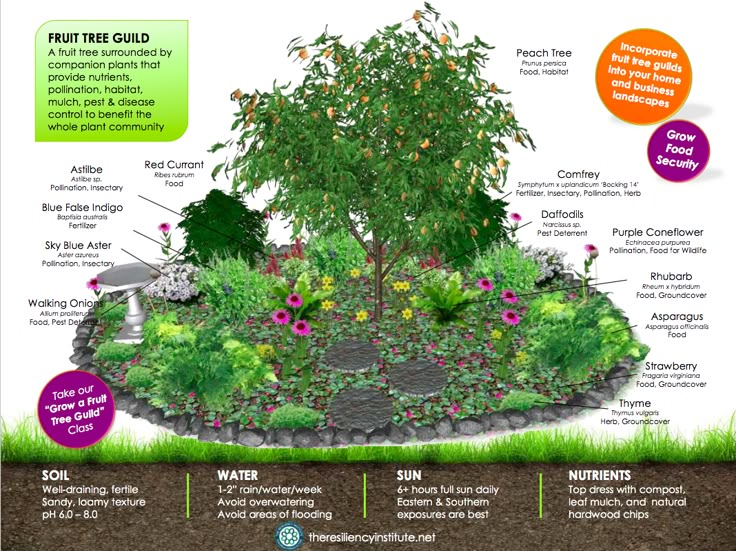Q. My Fatsia Japonica looks sick. Could it be a fungal disease? It gets full sun in the afternoon.

Fatsia japonica is also known as glossy leaved paper plant, castor oil plant, fig-leaf palm or Japanese aralia. It is a species of flowering plants in the family Ariliaceae, native to southern Japan and southern Korea, although it has now become naturalised in many areas of New Zealand.It is commonly grown as a low maintenance, garden ornamental in temperate regions where winters do not fall below minus15 °C (5 °F). It can also be grown as an indoor plant and has been shown to effectively remove gaseous formaldehyde from indoor air.
Fatsia japonica is also known as glossy leaved paper plant, castor oil plant, fig-leaf palm or Japanese aralia. It is a species of flowering plants in the family Ariliaceae, native to southern Japan and southern Korea, although it has now become naturalised in many areas of New Zealand.It is commonly grown as a low maintenance, garden ornamental in temperate regions where winters do not fall below minus15 °C (5 °F). It can also be grown as an indoor plant and has been shown to effectively remove gaseous formaldehyde from indoor air.
It takes the form of an evergreen shrub and in the right conditions can reach over 16 feet (5 metres) tall. The leathery leaves, which can reach 17 inches (45cms) in width, are arranged spirally around the petiole (stem). The leaves are lobed, with 7–9 broad lobes, divided to half or two-thirds of the way to the base of the leaf; the lobes are edged with coarse, blunt teeth.
The flowers are small and white, borne in dense terminal compound umbels in late autumn or early winter. Umbels are flower clusters originating from a common centre on separate stalks and forming a flat or curved surface. The flowers are followed by small black fruit in spring. The fruits are not edible, and gloves should be worn when handling the plant as the sap can cause skin irritation.

This is an attractive, shade-tolerant garden plant. It does well in the Vancouver Island and Gulf Islands areas in seaside gardens, against warm walls and inland sheltered corners. Fatsia grows best in moist but well drained soils and is happiest in part shade or even full shade.
Most fungal leaf spot diseases are active during wet times of the year such as in spring or early fall, but only a few are important enough to warrant aggressive control measures. Management for these diseases should begin by controlled watering practices to avoid getting above-ground parts wet. Also plant with adequate space and air circulation between plants to hasten drying. In most cases, fungal leaf spot diseases are not significant enough to warrant fungicide applications. Most fungal leaf spots cause only cosmetic damage or occur late in the season and thus do not warrant control.
If you suspect a fungus, collect, bag and dispose of all fallen leaves in autumn and again in spring before new growth begins. This reduces the amount of inoculum from fallen leaves. Most leaf spots that occur in early spring can cause premature defoliation and growth decline. It is advisable to wear gloves and even a mask while you clean up under the plant if you suspect a fungal infection (gloves because the sap is an irritant and a mask to avoid inhaling mould spores).
Without seeing pictures of the damage to the leaves of your Fatsia it is not possible to determine accurately the cause, but exposure to full afternoon sun can cause burning and shrivelling of leaves, weakening the plant. In the winter, frost can injure the leaves, but plants will recover if the roots are protected from frost by a deep layer of mulch. In an exposed location the Fatsia can be wrapped in burlap or other winter protection cloth to protect it from drying winds and snow load. Introducing some form of shade from afternoon sun for this plant, particularly in the summer months, may resolve the problem. Wearing gloves, trim off and dispose of the damaged leaves and clear up any leaves on the ground which may provide a vector for disease or insect infestation. Mulch the root area well with at least four inches of quality compost to feed the plant and keep the roots from getting too dry but keep the compost away from the base of the main stem to allow air circulation and prevent rotting. Ensure the plant gets adequate water in the hotter, drier months. A fertiliser appropriate for Fatsia can be applied in the spring or early summer to boost the plant as it recovers and to help it resist infection and damage through the growing season. Your local nursery can advise on the type of fertiliser to use.
The Royal Horticultural Society has given Fatsia japonica the Award of Garden Merit (AGM).
Sources:
https://en.wikipedia.org/wiki/Fatsia_japonica
https://www.rhs.org.uk/plants/7147/fatsia-japonica/details
Photos from my own garden.
Q. What can the gardener plant around a fig tree?
In nature, trees and other plants work together to help each other grow by providing extra nutrients, physical protection, support and other natural functions. We refer to this form of permaculture as a ‘Tree Guild’. This is an interconnected ecosystem promoting maximum growth, health and balance. Your fig tree would benefit from such a guild which comprises several different types of plants that perform different functions. Utilizing the benefits of a tree guild reduces the amount of weeding, watering and fertilizing required.
Below are examples of the categories of plants for a guild.

A ground cover – acts as a living mulch such as native Strawberry, White Dutch Clover, Creeping Thyme, low growing Sedums, Dianthus, Oregano (will need clipping to manage height), Buckwheat or Hostas. This layer keeps the fig tree roots cool and prevents soil erosion and weeds. It can also provide a buffer zone around the tree to prevent damage from a mower.
Protective plants – such as pollinator friendly plants that attract and provide habitat for beneficial insects and deterrent plants that repel harmful insects. Considerations could include Native Columbine, Yarrow, Lavender, Nasturtiums, Borage, Chives, Garlic, Lupine, Dill, Hyssop, Sunflowers, Alliums, Asparagus, Marigolds, Calendula, Lemon Balm and Lovage. Avoid grasses of any type. Could also include small flowering shrubs. Bear in mind the sunlight requirements for many of these plants. As the above ground portion of the annual plants die back after the season is over, their stems, leaves and flowers can be chopped or shredded and added back to the soil surface to compost back into the ground and feed the soil
Dynamic accumulators – these are plants with deep tap roots to bring minerals from deeper in the soil to help nourish the above ground growth of the fig tree. Comfrey is an excellent plant in this category but needs to be kept under control (Any trimmings can be added to a compost pile as Comfrey is also a compost accelerator). Other examples of dynamic accumulators are Shallots, Egyptian Walking Onion, Carrots, Garlic, Beetroot, Borage and Chicory.
Nitrogen fixers – contribute to overall soil health by retaining nitrogen in the soil. The nitrogen is stored in nodes on their root systems and released into the soil when the above ground portion of the plant is cut down. Examples include legume plants such as Clover, Lupines, Beans and Peas. When cutting these plants down, cut at ground level and leave the root system intact in the ground. It will decompose over the winter and provide nutrients as well as nitrogen for the soil.
Ensure your fig tree receives adequate water in the hot, dry weather as this will enable it to utilize the nutrients in the soil which need to be in a soluble form for the roots to absorb them. With adequate ‘mulch’ plants, the water requirements should be less, an important factor in our increasing periods of summer drought.
These components together support an interconnected system of plant and soil health which benefits and supports the fig tree as well as cutting down on work for the gardener. Many of them such as Asparagus, Garlic, Onions, Beetroot and Carrots also provide food for the gardener!
Sources:
Fruit Tree Guild Layers Categories
Moe Wendt, permaculture educator, Salt Spring Island Garden Club
https://www.permablitz.net/articles/characteristics-tree-guild/ (for illustration)
